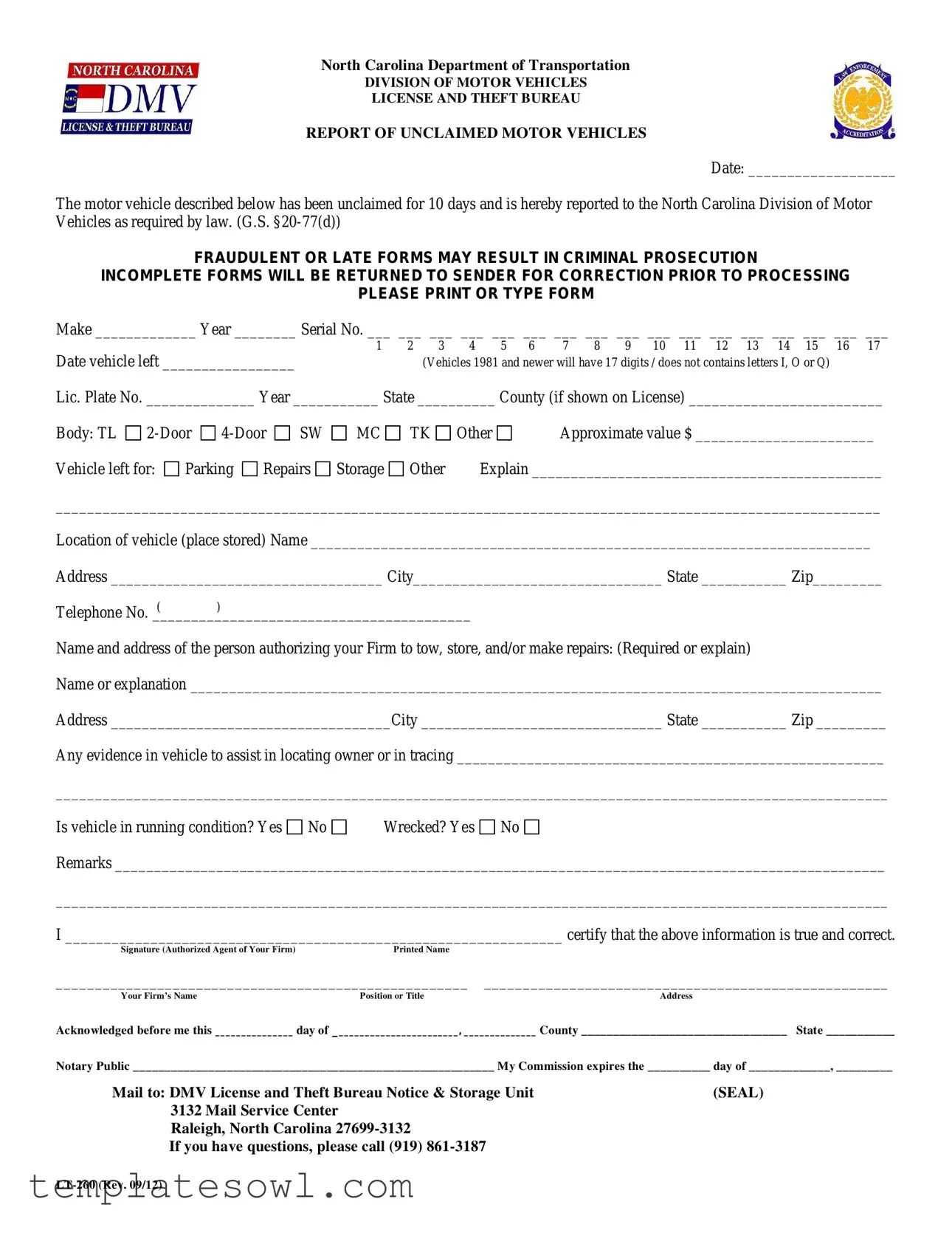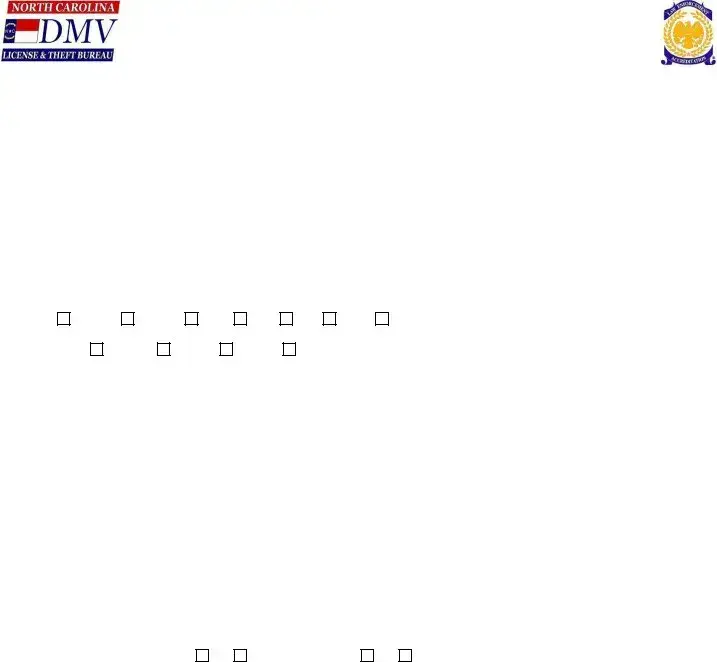North Carolina Department of Transportation
DIVISION OF MOTOR VEHICLES
LICENSE AND THEFT BUREAU
REPORT OF UNCLAIMED MOTOR VEHICLES
Date: ___________________
The motor vehicle described below has been unclaimed for 10 days and is hereby reported to the North Carolina Division of Motor Vehicles as required by law. (G.S. §20-77(d))
FRAUDULENT OR LATE FORMS MAY RESULT IN CRIMINAL PROSECUTION
INCOMPLETE FORMS WILL BE RETURNED TO SENDER FOR CORRECTION PRIOR TO PROCESSING
PLEASE PRINT OR TYPE FORM
Make _____________ Year ________ Serial No. ___ ___ ___ ___ ___ ___ ___ ___ ___ ___ ___ ___ ___ ___ ___ ___ ___
1 |
2 |
3 |
4 |
5 |
6 |
7 |
8 |
9 |
10 |
11 |
12 |
13 |
14 |
15 |
16 |
17 |
Date vehicle left _________________ |
|
(Vehicles 1981 and newer will have 17 digits / does not contains letters I, O or Q) |
|
|
Lic. Plate No. ______________ Year ___________ State __________ County (if shown on License) _________________________
|
|
|
|
|
|
|
|
|
|
Body: TL |
2-Door |
4-Door |
SW |
MC |
TK |
Other |
Approximate value $ _______________________ |
Vehicle left for: |
Parking |
Repairs |
Storage |
Other |
Explain _____________________________________________ |
__________________________________________________________________________________________________________
Location of vehicle (place stored) Name ________________________________________________________________________
Address ___________________________________ City________________________________ State ___________ Zip_________
()
Telephone No. _________________________________________
Name and address of the person authorizing your Firm to tow, store, and/or make repairs: (Required or explain)
Name or explanation _________________________________________________________________________________________
Address ____________________________________City _______________________________ State ___________ Zip _________
Any evidence in vehicle to assist in locating owner or in tracing _______________________________________________________
___________________________________________________________________________________________________________
Is vehicle in running condition? Yes |
No |
Wrecked? Yes |
No |
Remarks ___________________________________________________________________________________________________
___________________________________________________________________________________________________________
I ________________________________________________________________ certify that the above information is true and correct.
Signature (Authorized Agent of Your Firm)Printed Name
_____________________________________________________ ____________________________________________________
Your Firm’s NamePosition or TitleAddress
Acknowledged before me this _______________ day of ________________________, ______________ County _________________________________ State ___________
Notary Public __________________________________________________________ My Commission expires the __________ day of _____________, _________
Mail to: DMV License and Theft Bureau Notice & Storage Unit |
(SEAL) |
3132 Mail Service Center |
|
Raleigh, North Carolina 27699-3132 |
|
If you have questions, please call (919) 861-3187 |
|
LT-260 (Rev. 09/12) |
|

